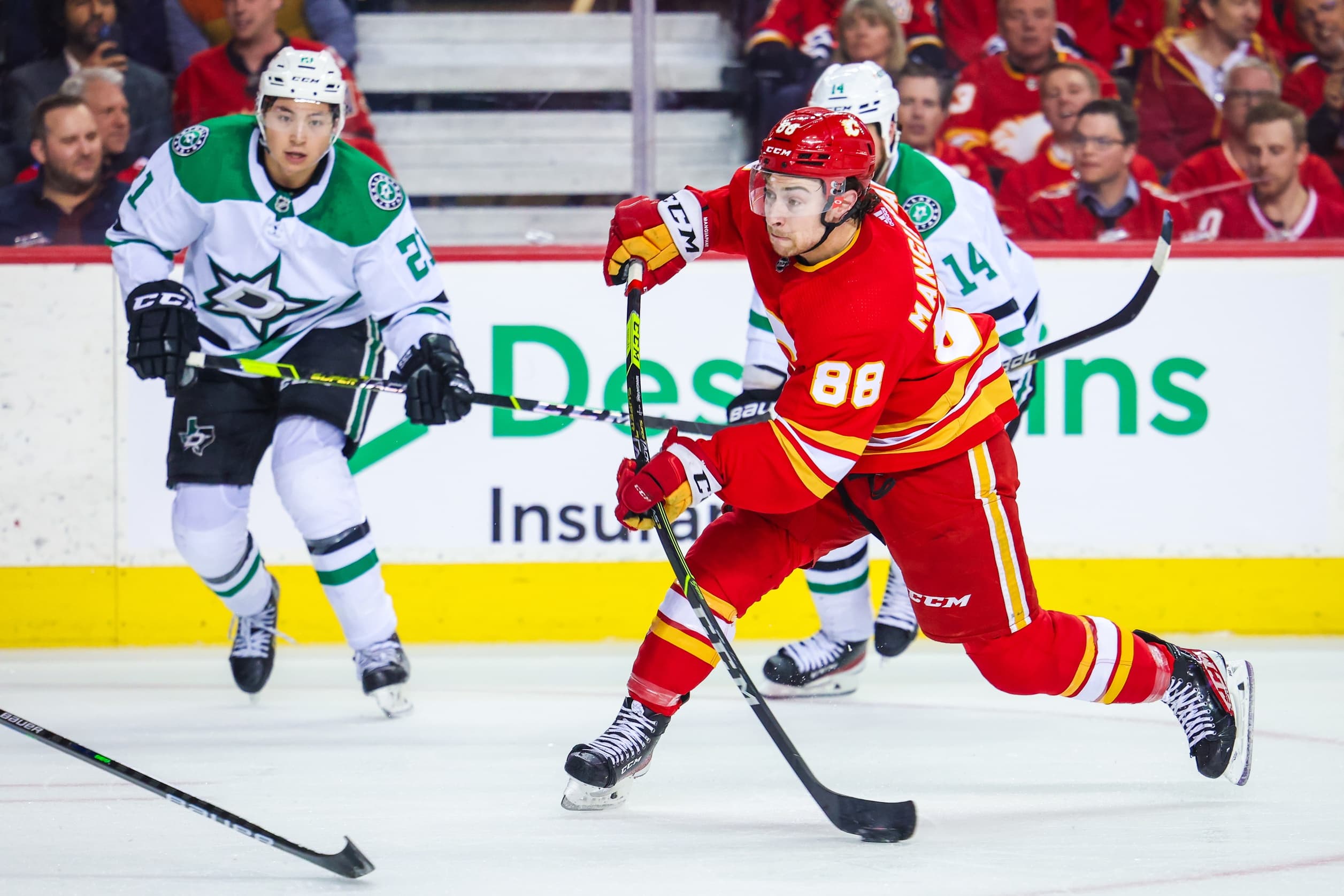Nation Sites
The Nation Network
FlamesNation has no direct affiliation to the Calgary Flames, Calgary Sports and Entertainment, NHL, or NHLPA
Where will the goals come from for the Calgary Flames in 2023-24?

Photo credit: Sergei Belski-USA TODAY Sports
Heading into the 2022-23 season, after the departures of Sean Monahan, Johnny Gaudreau and Matthew Tkachuk, the question on everybody’s minds was ‘Where will the goals come from for the Calgary Flames!?‘ A year later, following a season without a playoff appearance and the departure of leading goal-scorer Tyler Toffoli via trade, the question is worth exploring again.
If the 2022-23 Flames were a team that needed to rely on scoring by committee, the same is doubly true for the 2023-24 vintage of the club.
Past performance and future performance
Before we get into the numbers, let’s get into a bit of what underpins projections of future performance. Generally-speaking, we see past performance as a pretty good indicator of future performance for professional athletes.
If a player has consistently scored goals at a high frequency in the past, and has historically had a high shooting percentage, it suggests that all things being equal that should continue. Now, any number of things can disrupt a player’s high shooting percentage. Among them: age, injury, player fatigue, or players moving into new roles or new playing systems that disrupt their goal-scoring prowess (or confidence). Players aren’t robots, they’re people, and people’s lives and job performance can be upended by a lot of different things.
But, fundamentally-speaking, when we look at what players can reasonably be expected to do, we look at what they’ve done in the past.
With that said, let’s look at what didn’t go right for the 2022-23 Flames.
Outliers and regression
So, remember the point about past performance being indicative of future performance? Well, the 2022-23 Flames read that point and laughed at it.
The Flames scored 258 goals in 2022-23 – 182 at five-on-five, 50 on the power play, 8 shorthanded, and 18 in other game situations. Their five-on-five output was 9th in the NHL, their power play output was tied for 18th in the NHL. They were 19th in the NHL in goals for overall.
On an individual level, there was a ton of variation from what one would expect from each player’s career to that point (measured by what they would have scored with their career-to-date shooting percentage and 2022-23 shot output):
- Scored More Than Expected: Nikita Zadorov (+7.6), Rasmus Andersson (+5.9), Tyler Toffoli (+4.5), Brett Ritchie (+2.5), Troy Stecher (+2.2)
- Scored Less Than Expected: Andrew Mangiapane (-14.1), Nazem Kadri (-6.0), MacKenzie Weegar (-4.3), Mikael Backlund (-3.3), Chris Tanev (-3.2), Adam Ruzicka (-2.9), Milan Lucic (-2.6)
(Worth noting: Jonathan Huberdeau’s shooting percentage was right in line with his career average.)
If everybody on the 2022-23 Flames scored according to their prior career-average shooting percentages rather than their 2022-23 percentages, the Flames would have scored an additional 14.4 goals. That would give them 272 goals overall and push them to 13th spot in the NHL. Not quite world-beaters, but a very respectable offensive output.
Who will replace the outgoing scoring?
From the 2022-23 team, eight players (and their offensive outputs) are gone: Toffoli, Trevor Lewis, Lucic, Michael Stone, Brett and Nick Ritchie, Troy Stecher and Connor Mackey. They combined for 71 of the Flames’ 258 goals.
So how are those goals being replaced? Well, in theory, the replacement would be on three fronts:
- New players establishing themselves: Yegor Sharangovich joins the Flames from New Jersey, while Jakob Pelletier, Matt Coronato and Walker Duehr are expected to push for regular NHL jobs. Sharangovich is a career 12.8% shooter and scored 24 goals in 2021-22. Pelletier shot 14.9% in two AHL seasons and was one of the top players in the Flames’ farm system. Coronato shot 14% in two NCAA seasons and was one of the top players for Harvard. It’s not unreasonable to expect any of these three players, given steady roles, reliable linemates and shot volume, to continue to be potent offensive players. Duehr’s more of a depth player, but he was quite good both in the AHL (where he shot 12.9%) and the NHL (in a brief audition).
- Existing players bouncing back to career averages: As noted, several prominent Flames were fighting it offensively in 2022-23. If their shooting percentages regress closer to their career averages, that could make up for several of the departures.
- The power play bouncing back: So, the Flames’ power play was not great in 2022-23. It didn’t generate a lot of high-danger shots or chances, and it didn’t generate a ton of goals, either. Between a new head coach in Ryan Huska, a new power play coach in Marc Savard, input from special advisor Jarome Iginla, and some new, younger faces in the lineup, it seems likely that the power play improves over its 2022-23 edition.
The 2022-23 Flames were expected to score by committee if they were going to get where they wanted to go. It didn’t work out, and if you look at player goal (and shooting percentage) outputs compared to their career averages, it’s probably not unfair to say they disappointed by committee.
If the 2023-24 Flames are going to get to where they want to go, they’ll need to bounce back offensively… by committee. There’s no one magic bullet that’s going to replace Toffoli’s output – or anybody else’s, for that matter. There will need to be improvements from throughout the lineup to make it happen.
Breaking News
- Flames Prospect Roundup: How the standings shape up entering the holiday break
- NHL Notebook: Sidney Crosby takes sole possession of most points in Penguins’ franchise history
- FlamesNation Mailbag: Waiting for Santa with reader questions
- Flames injury news: positive signs for Martin Pospisil
- Recap: Martin Frk leads Wranglers to memorable Winter Wranglerfest win in more ways than one
